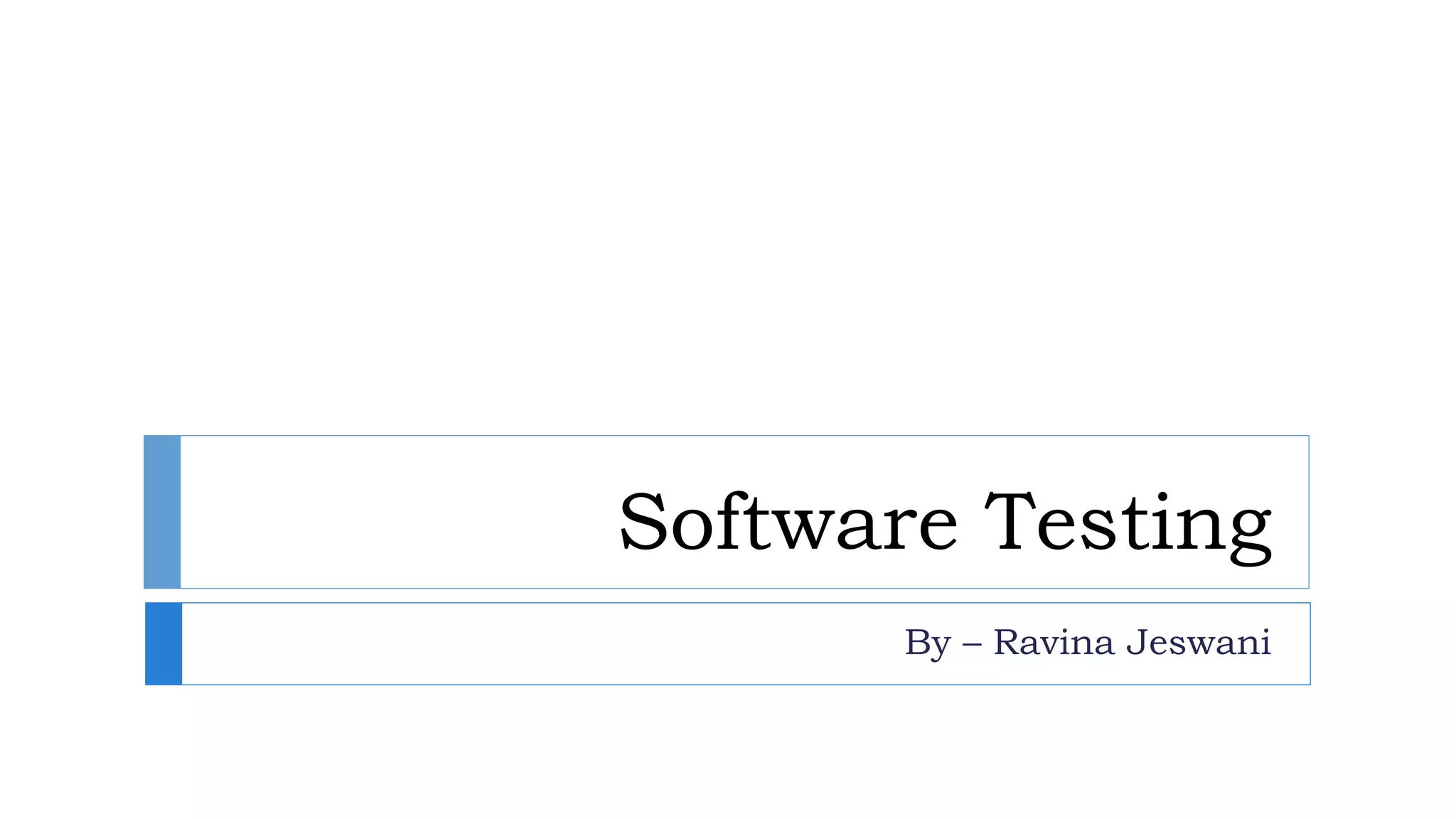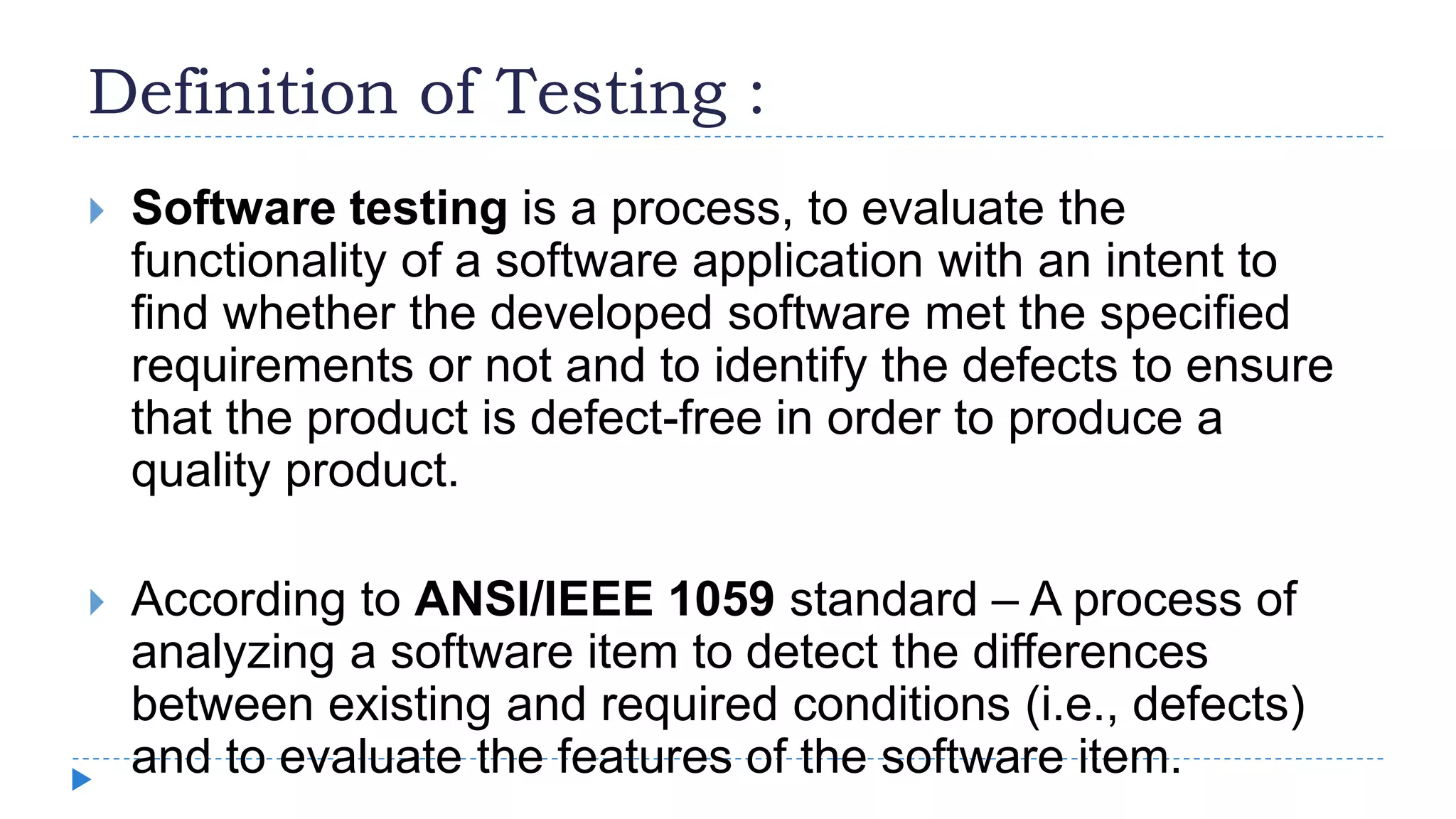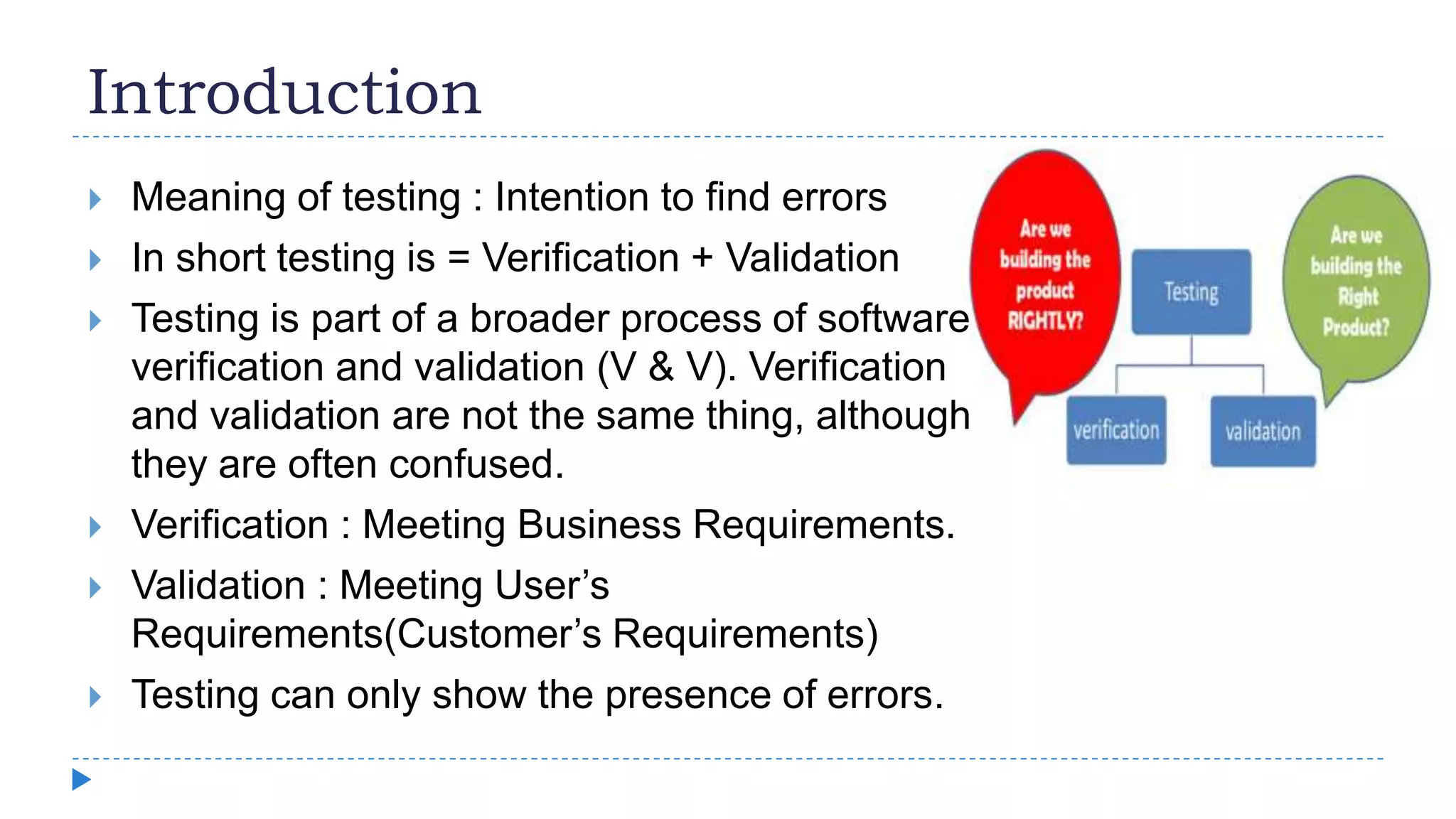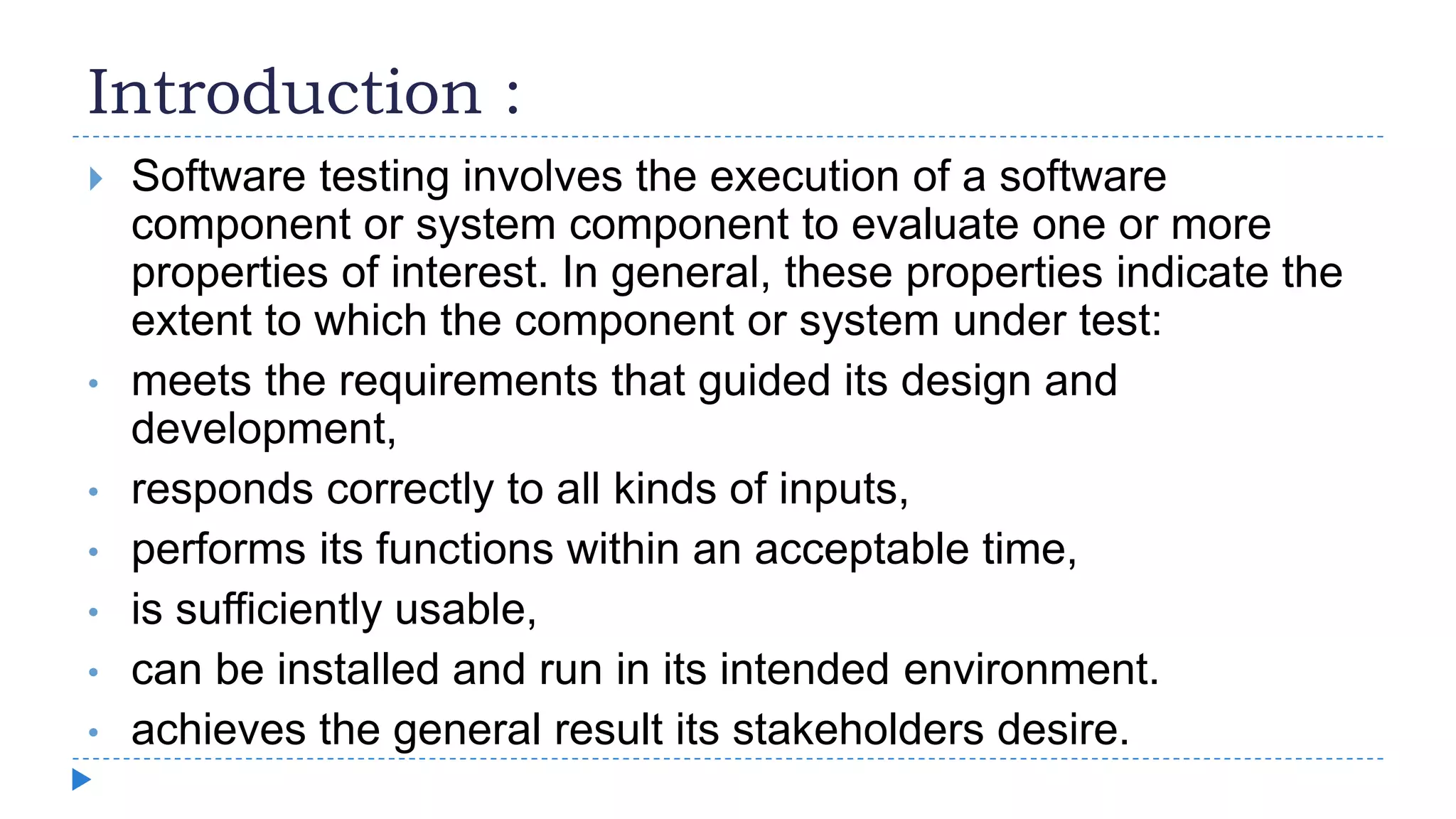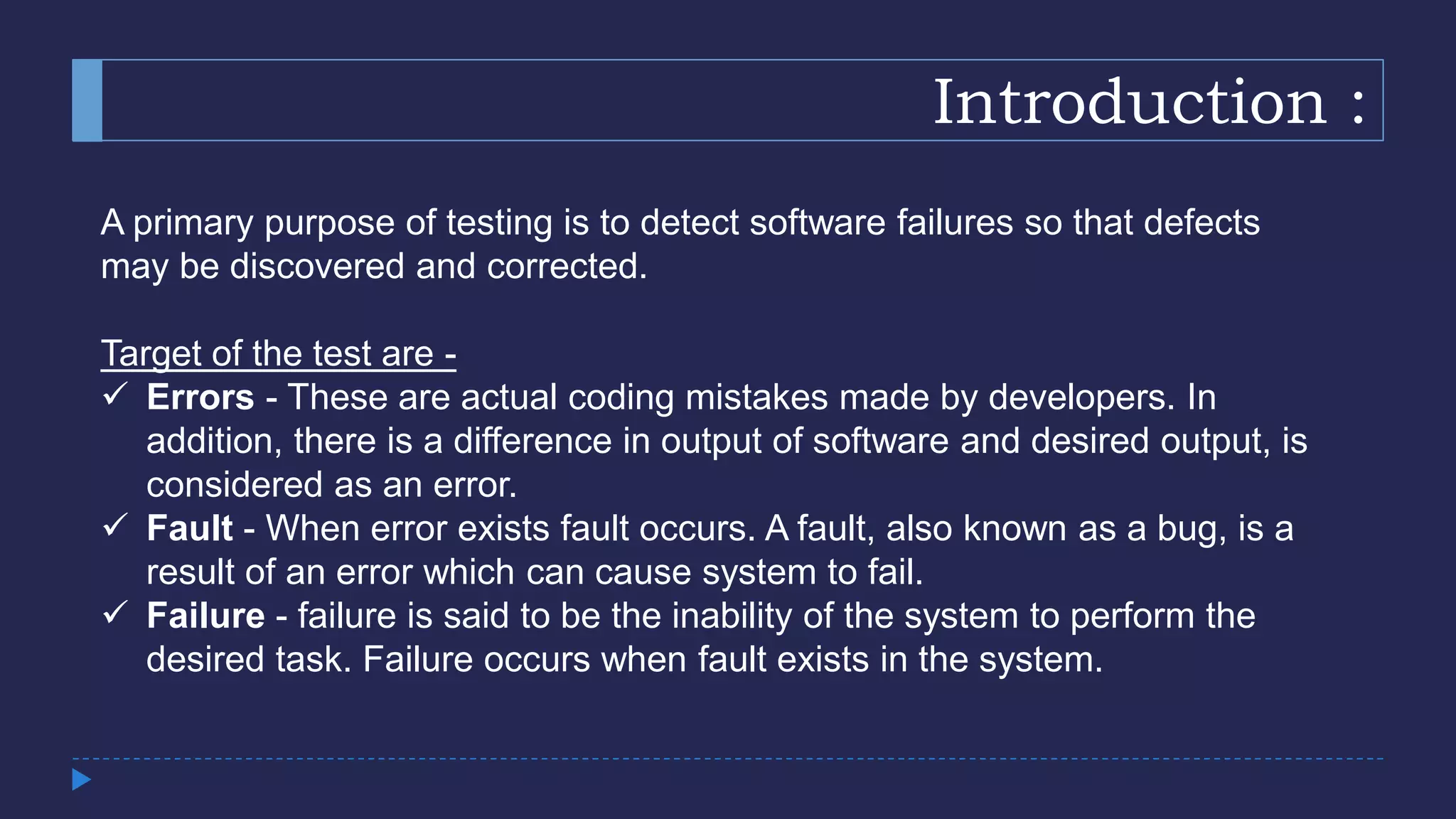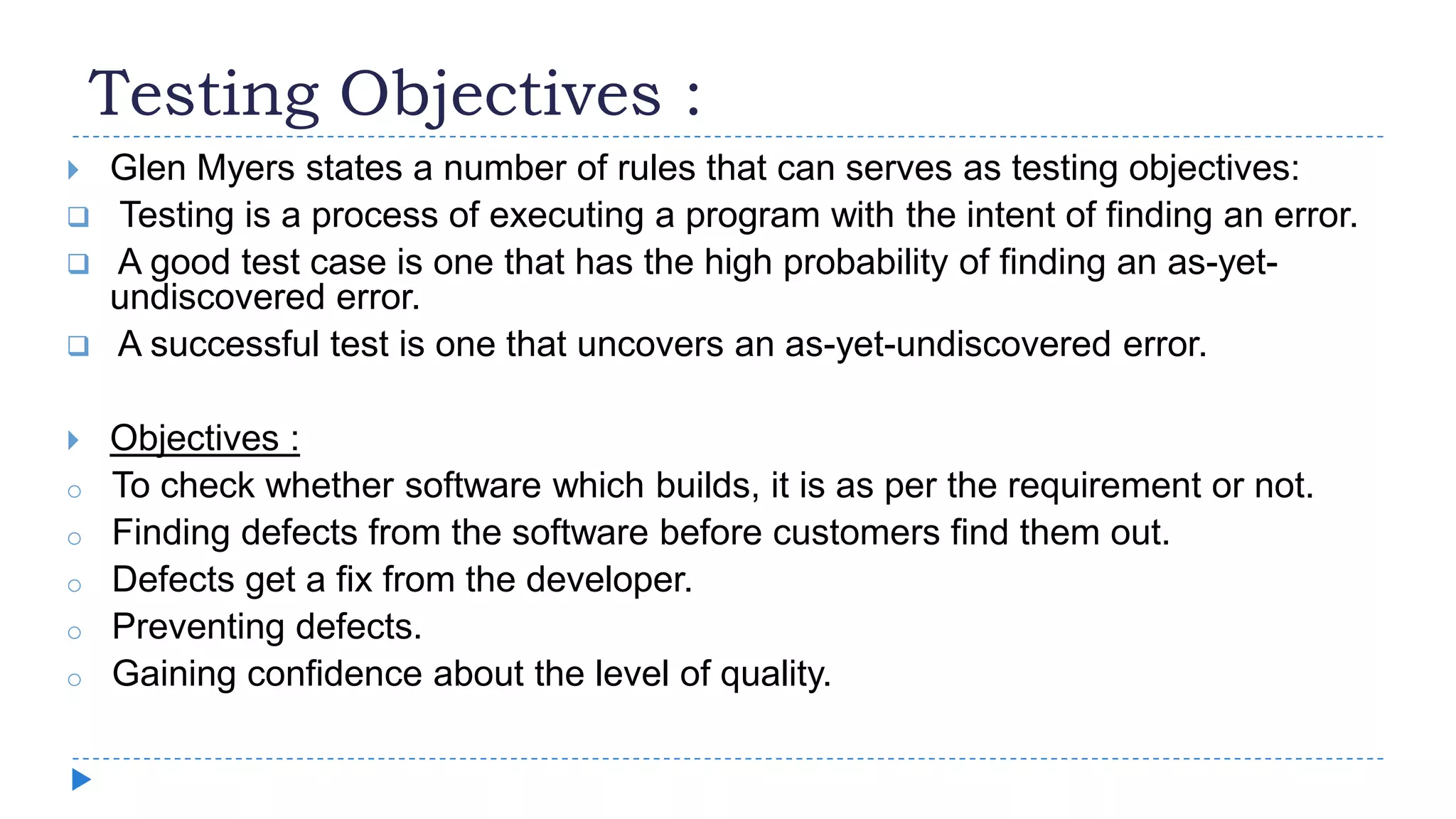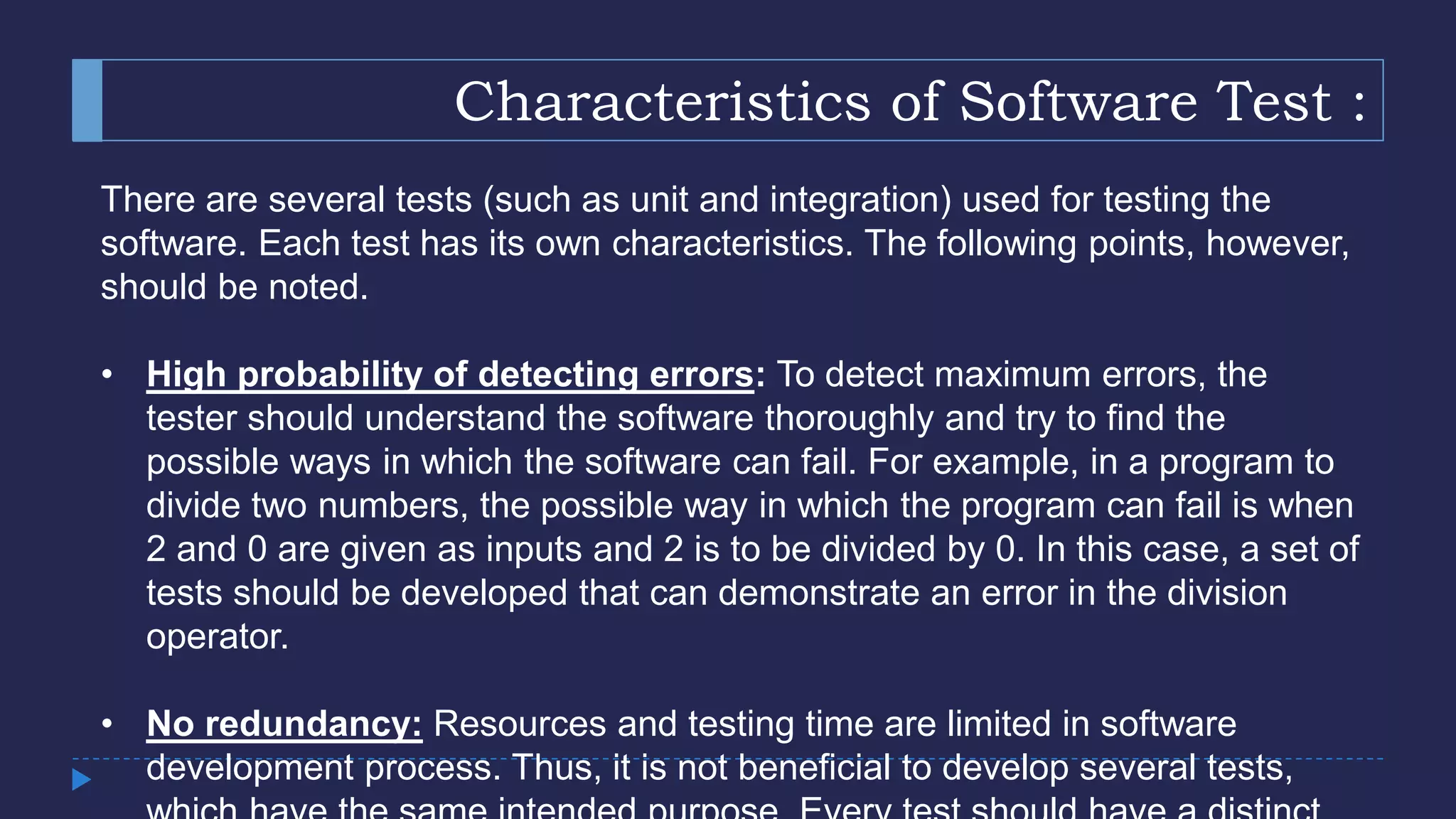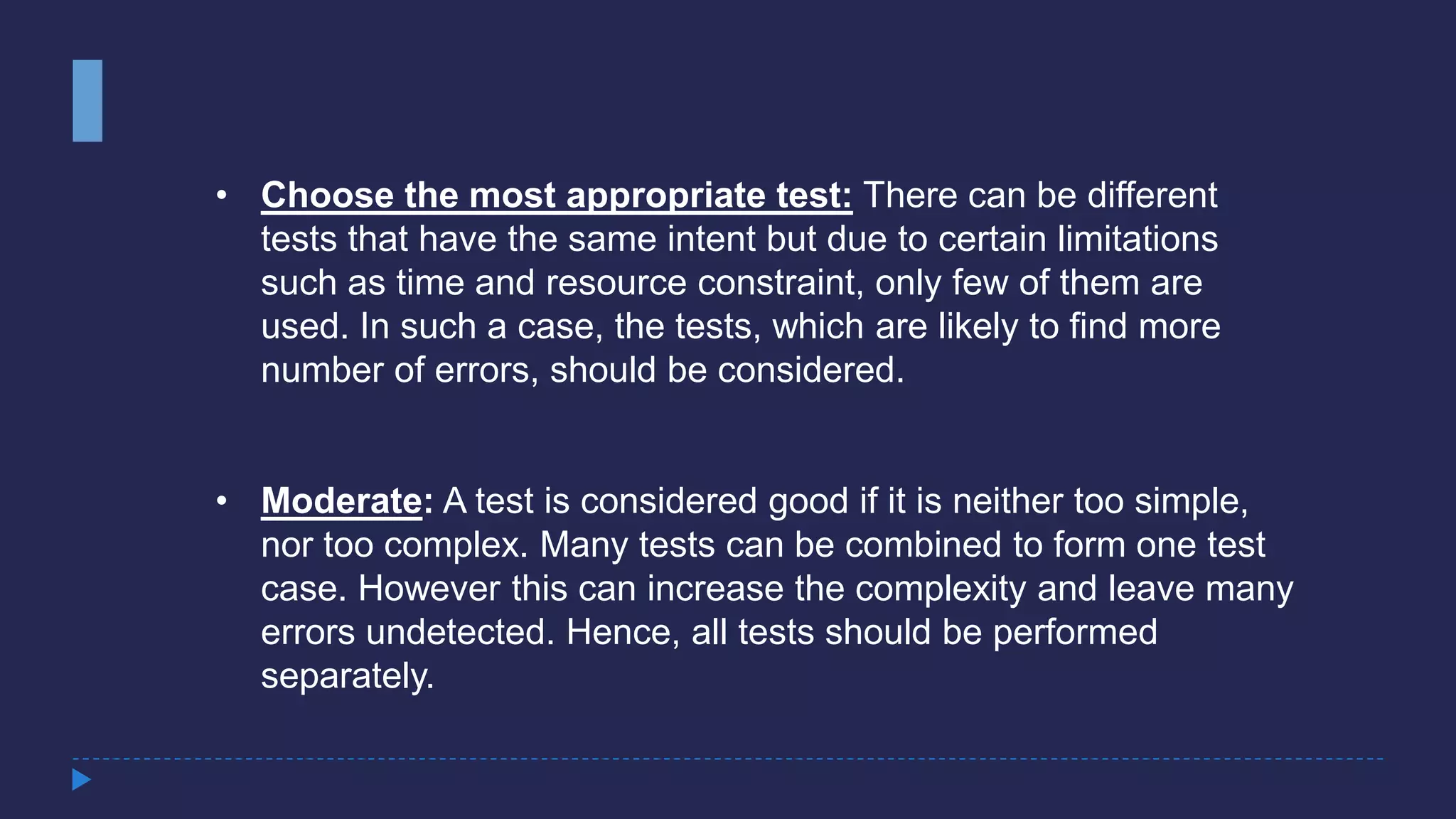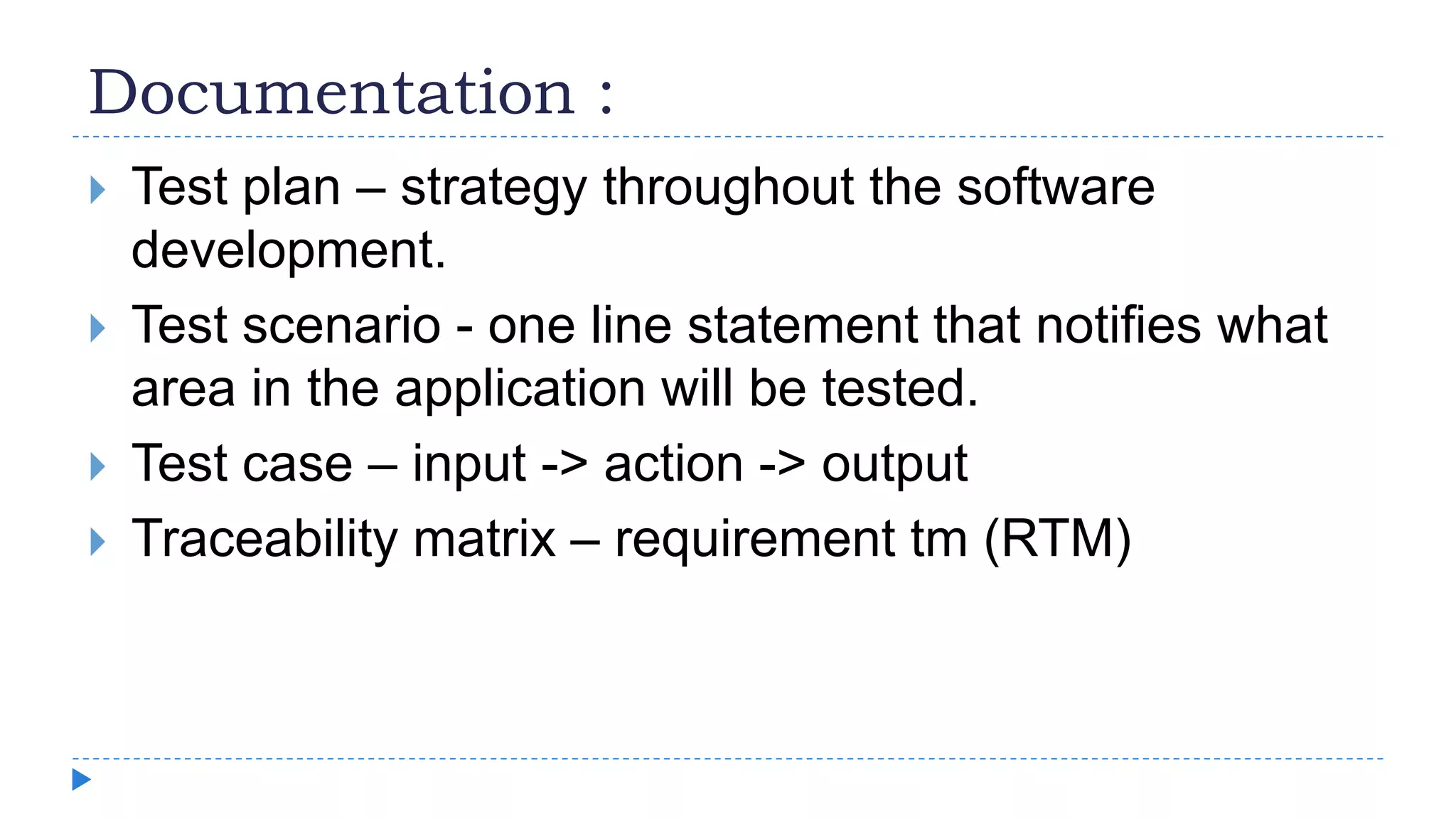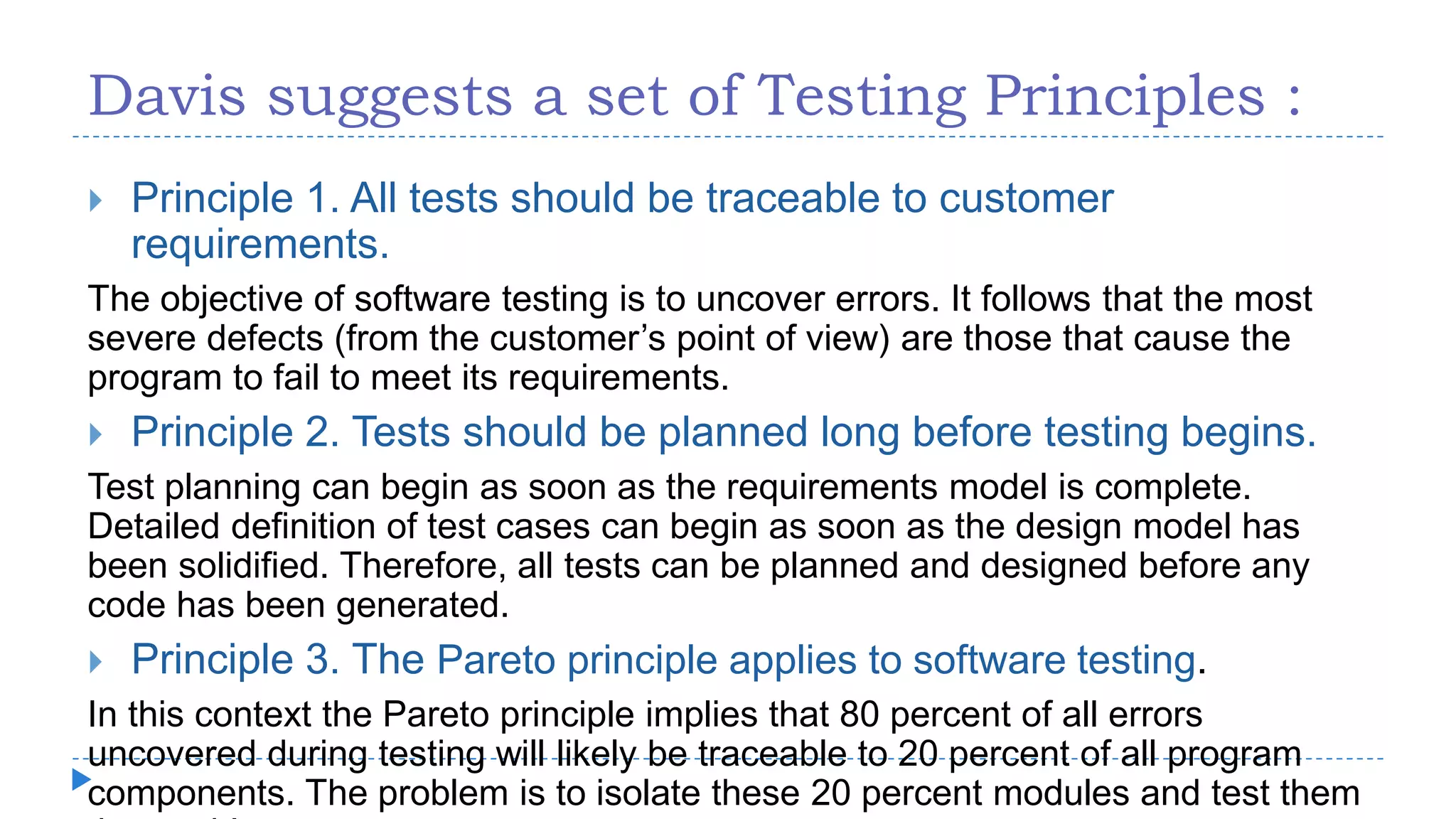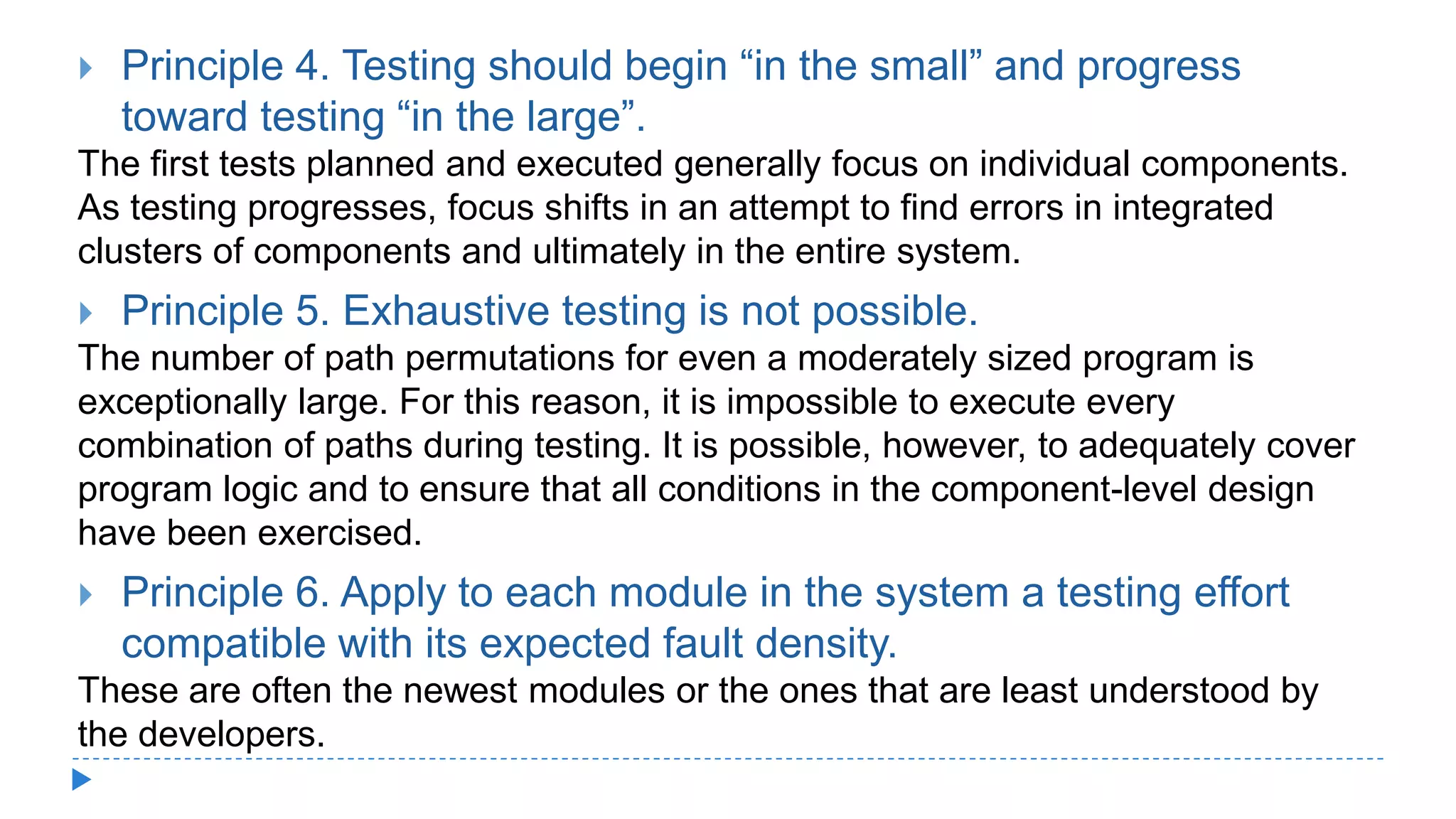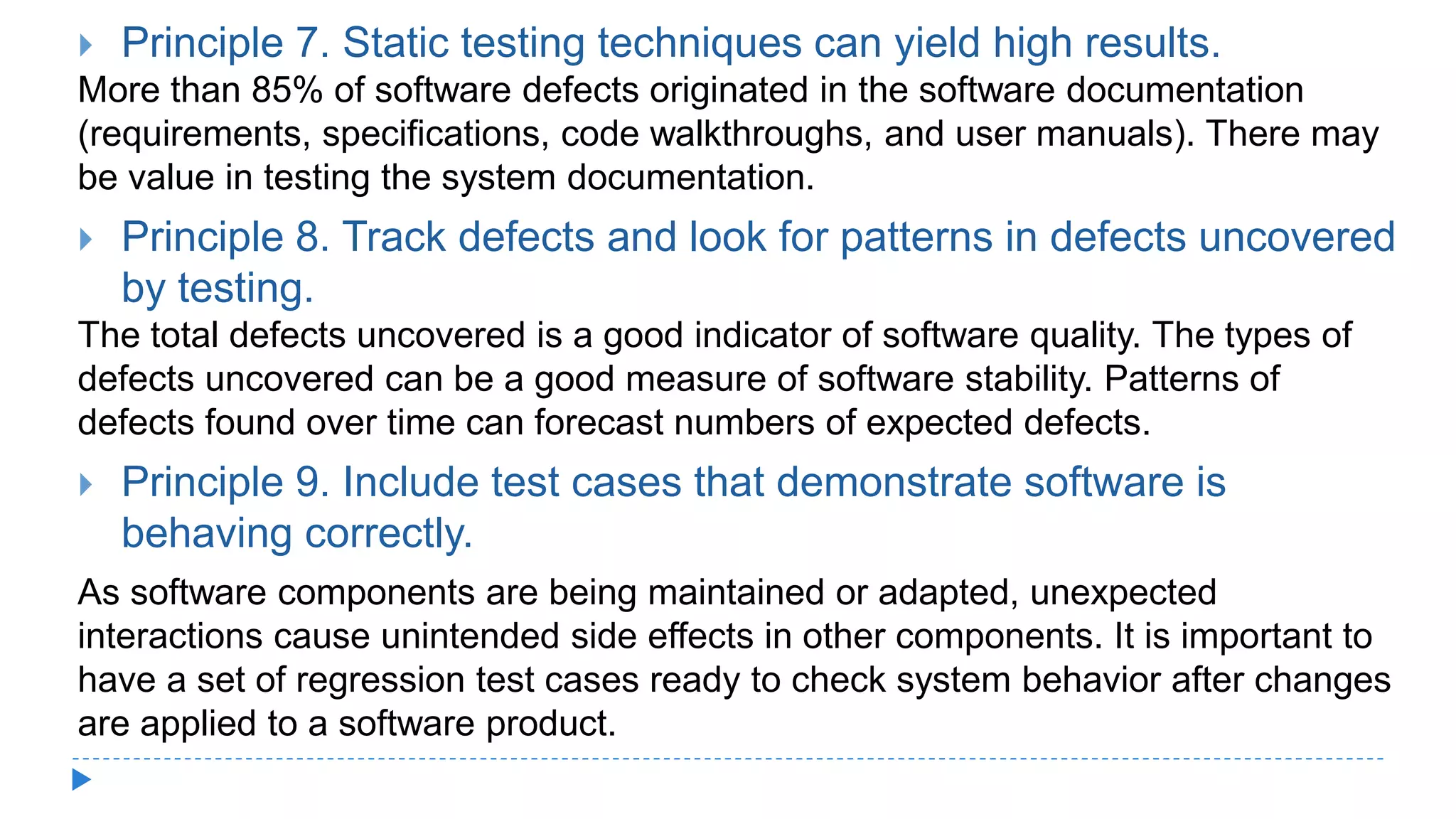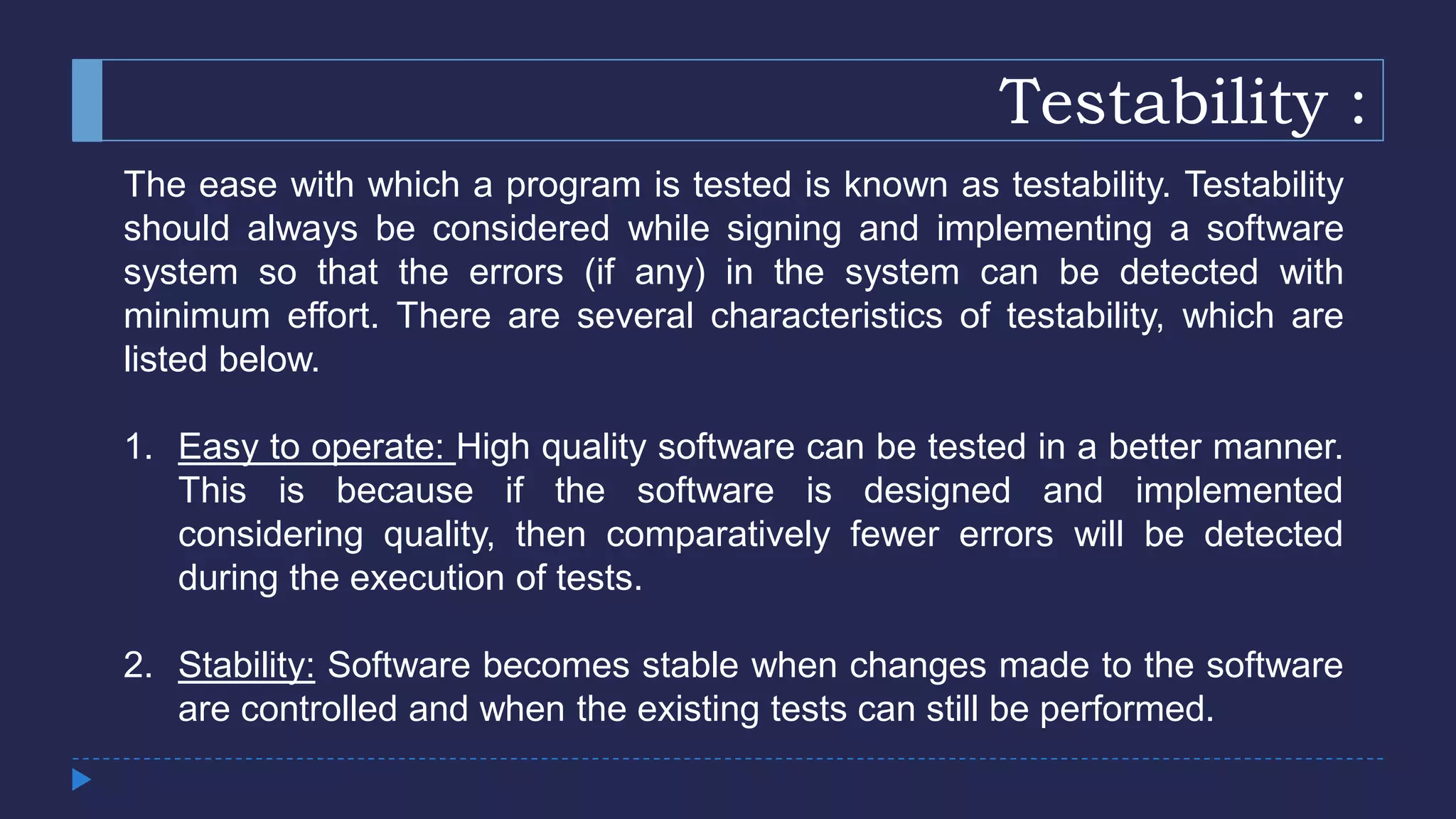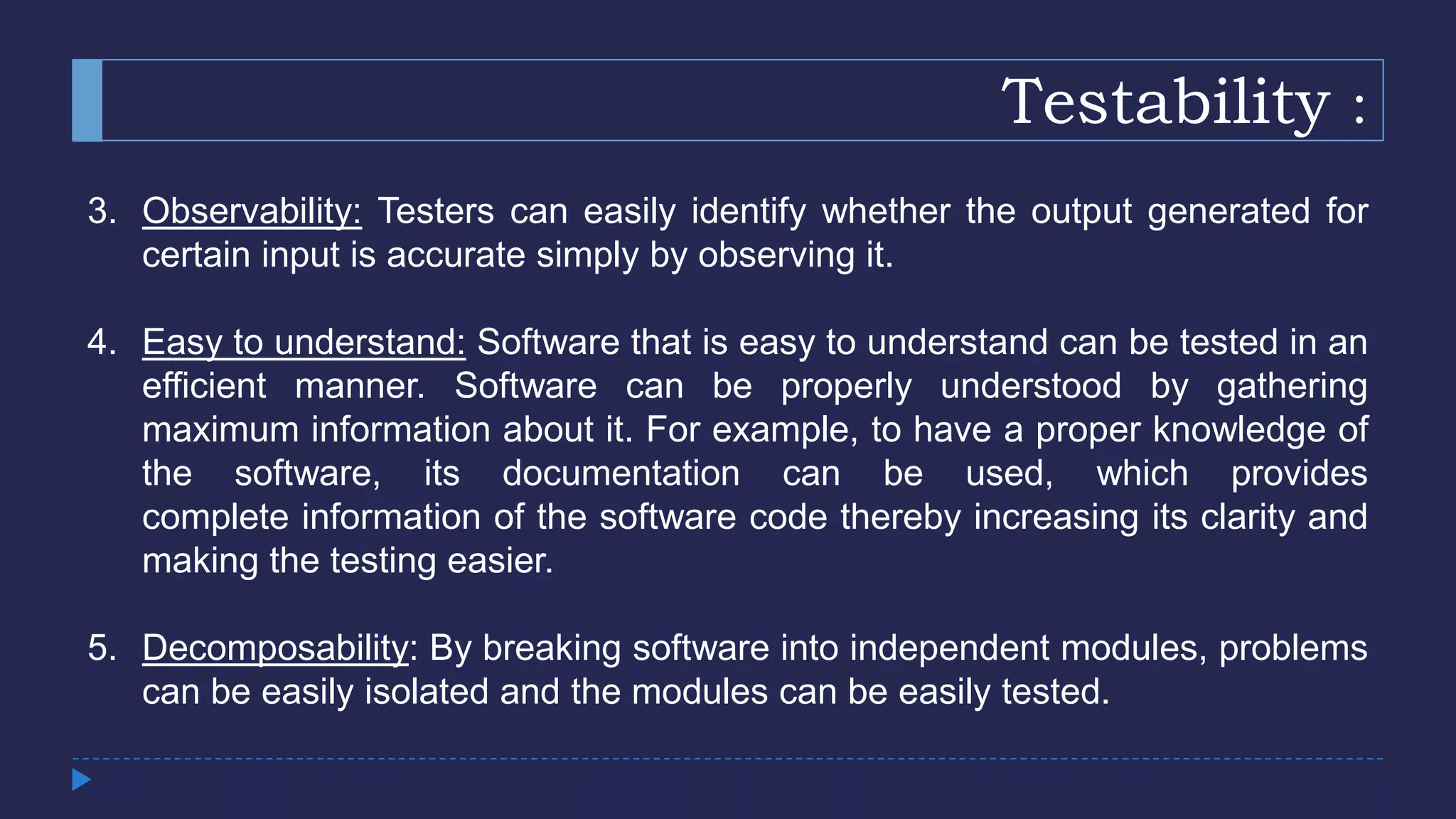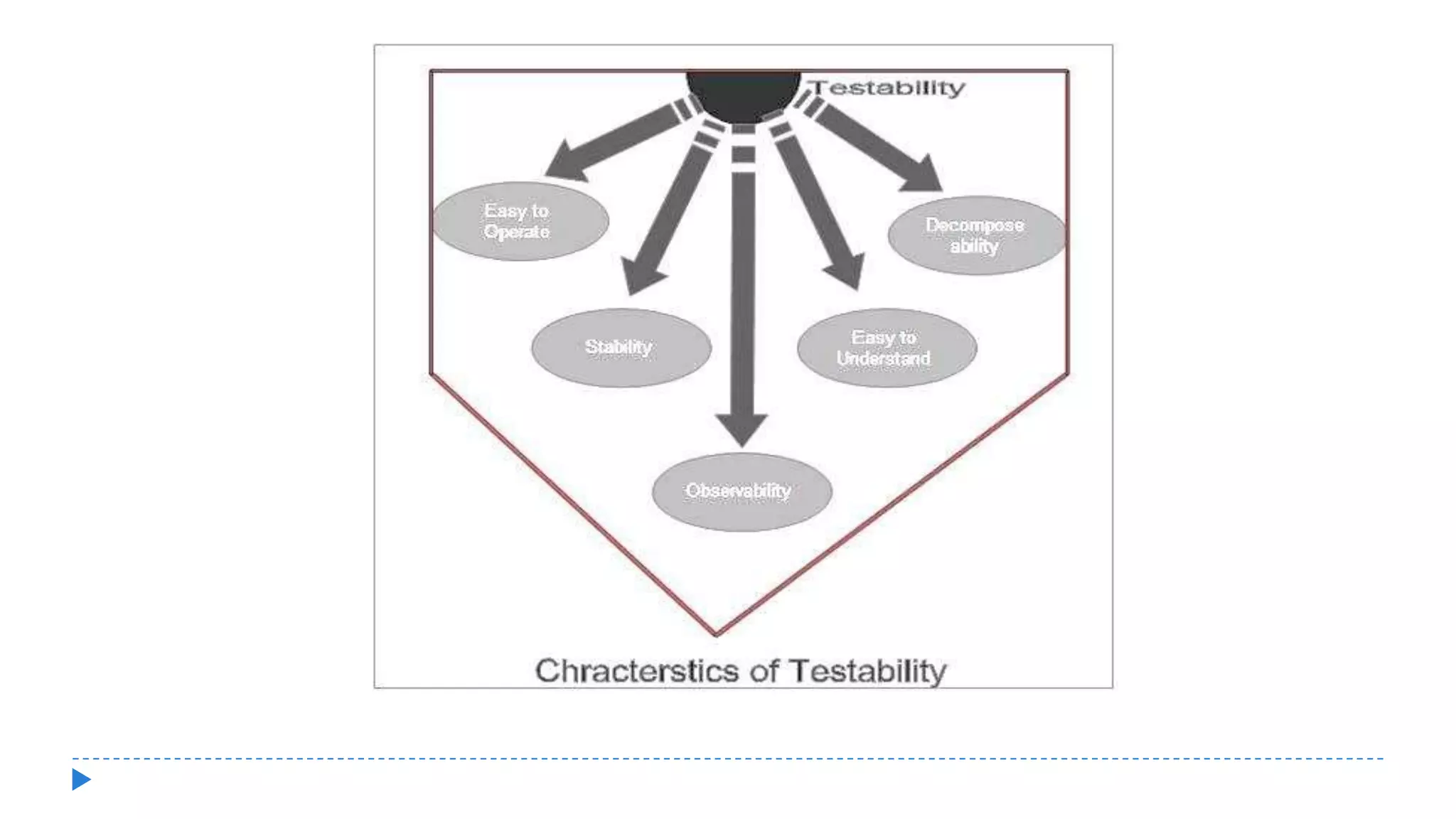Software testing is the process of evaluating an application to ensure it meets specified requirements and to identify defects, thereby producing a quality product. It involves verification and validation, aiming to uncover errors before customers encounter them, and includes various testing principles and objectives such as traceability to requirements and focused testing strategies. Key characteristics of successful testing include high error detection probability, appropriate testing context, and the importance of testability in software design.
